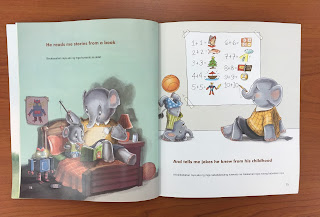I am sharing this exchange I had with a dear fiend in the book industry on identity and book illustrations.
Bestie: Question! (This is research for one of my talks.) What makes Filipino illustrations Filipino?
Me: Simple lang yan for me. If the reader feels Filipino when he/she encounters and engages in the book or the art. Let the writer and artist create a book or art Filipino man siya o hindi. If there is a reader who sees himself or herself in the art, in the story and his/her culture and values as a Filipino then, that's it.
Filipino author ka? Filipino illustrator ka? Sulat ka lang. Gawa ka lang ng art mo. If the book or the art connects to a Filipino reader, identifying values and culture that amplify his or her identity and sense of self as Filipino, then that's a book or an illustration that is Filipino.
Now there are instances when a reader, not Filipino necessarily, is able to find himself in a book or in the art of the book made by a Filipino. I think it's because art and literature are great equalizers -- As much as death and tragedies do.
Bestie: Follow up question 😁 Then what would make a foreigner identify illustrations as "Filipino" and enjoy / appreciate the illustrations as foreigners?
What he/ she initially knows about the Philippines and its people. Dianne de Las Casas thought of using the jeepney as cover for our book. Cramped. Overloaded with happy passengers. That's her worldview and perspective. It was Bernadette Solina Wolf's husband, Michael who is German, who made the suggestion to put colorful banderitas in the margin. Fiesta - that's how Michael identify Filipino culture.
The enjoyment comes in when the reading or the engagement with the book begins.
Bestie: Is there anything. . . "universal" about our illustrations?
Me: Themes and concepts, yes. But the style of art, I am not so sure.
Maybe universality would depend on the illustrator's vision and rendition. Take for example Serge Bumatay's illustrations of Tight Times. It feels so, ah, European but, I also feel that I am reading a book made by Filipinos.
Melag makes use of Baroque. But the use of space, balance and perspective reminds me of what life is like in Tuguegarao, my father's hometown.
I love pepper Roxas's work in Mang Andoy's signs because it reminds me of two things from my childhood - the golden books series and my growing years in Pateros!
I also think that universality would also mean or connected to, aesthetics, beauty and even, ethics. We appreciate what is beautiful and good and we say, ah, it's art!


No comments:
Post a Comment